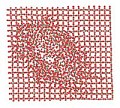 Advocates of nuclear power point to recent advances in waste storage materials that could allow the radioactive byproducts of the nuclear industry to be stored safely and indefinitely in ceramics rather than glass. Whereas those not in favour of splitting atoms to produce almost limitless energy point out that even vitrified nuclear waste will represent an ongoing problem for thousands of years.
Advocates of nuclear power point to recent advances in waste storage materials that could allow the radioactive byproducts of the nuclear industry to be stored safely and indefinitely in ceramics rather than glass. Whereas those not in favour of splitting atoms to produce almost limitless energy point out that even vitrified nuclear waste will represent an ongoing problem for thousands of years.
Ceramics have come to the fore as an alternative storage medium. However, a recent study by researchers at Cambridge University and Pacific Northwest National Laboratory using NMR spectroscopy suggests that storing high-level nuclear waste (plutonium) without leakage over thousands of years might not be possible even with those materials. The NMR study reveals that alpha particles emitted by the plutonium, while only travelling a short distance through the ceramic wreak havoc with the ceramic’s structure and so could lead to long-term stability problems.
I spoke with Cambridge’s Ian Farnan about the research for the February 1 issue of the NMR channel on SpectroscopyNOW.com. He explained that silicon-29 NMR spin counting experiments on samples with activities greater than 4 GBq was used for the first time to demonstrate how decaying plutonium knocks atoms in the ceramic out of kilter. The findings do not preclude the use of zircon ceramics in the storage of radioactive waste but provides a stronger basis in long-term stability on which to make nuclear waste disposal decisions.